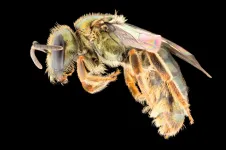(Press-News.org) This press release is in support of a presentation by Dr Maria Cerrillo Martinez presented online at the 37th Annual Meeting of ESHRE.
29 June 2021: Fertility patients who have a poor response to ovarian stimulation represent a stubborn challenge in IVF. Few eggs are collected, success rates are low, and several treatments are usually needed to achieve pregnancy (if at all). Clinical guidelines indicate that increasing the drug dose for stimulation or applying any of several adjunct therapies are of little benefit. Now, however, a study assessing two cycles of ovarian stimulation and two egg collections in the same menstrual cycle may yet provide a real advance for predicted poor responders in IVF.
A randomised trial performed in Spain has found that this double stimulation approach - known as "DuoStim" - is just as efficient as two conventional stimulations in different cycles and importantly reduces the time to pregnancy in a group of patients who rarely have time on their side. "This is of great clinical utility," said Dr Maria Cerrillo Martinez, presenting the study results at ESHRE's online annual meeting on behalf of her colleagues at IVIRMA in Madrid. Dr Cerrillo added that this was the first randomised trial to compare the efficiency of single-cycle DuoStim with two conventional treatments in separate cycles.
The study took place throughout 2017 and 2020 in a total of 80 IVF patients scheduled for embryo testing (PGT-A for chromosomal normality). All were aged over 38 and their reproductive history and ovarian reserve tests predicted a low response to ovarian stimulation - with few eggs collected and a likely poor outcome. They were randomised to two conventional cycles of stimulation or to DuoStim, and results were significantly in favour of the latter.
While the initial "laboratory" response to stimulation was comparable between the two groups in terms of eggs collected and healthy embryos developed, there was a significant difference in the average number of days it took to develop a chromosomally normal embryo ready for transfer. The DuoStim group reached this point in an average of 23 days from the start of stimulation, while the conventional two-treatment group took an average of 44 days. There was also a trend towards higher fertilisation and blastocyst-formation rate in the DuoStim group.
Since the earliest days of IVF treatment, whether in a natural or stimulated cycle, treatment has always involved a single attempt in a single cycle. Stimulation has always been with fertility hormones known as gonadotrophins with the aim of producing multiple eggs for collection and fertilisation. The idea of stimulating the ovaries twice in the same cycle has seemed counterintuitive, but, says Dr Cerrillo, the concept is quite in tune with the biology of the ovary.
"Classically," she explained, "only one cohort of follicles has been recruited in the early 'follicular' phase of the cycle. However, we know from data in other species that stimulation in the second 'luteal' phase of the cycle was also possible. So some women having fertility preservation before cancer treatment and with little time to spare were stimulated as soon as they came to the IVF unit, and they usually responded normally. It's the same principle behind DuoStim - that we can recruit a cohort of follicles on any day of the cycle."
So far, the benefits of a dual stimulation strategy seem to be concentrated on time to pregnancy and the generation of several eggs in a treatment group usually associated with very few. Studies so far have also found that fewer patients have dropped out of treatment programmes because of the shorter time required.
So far, guidelines for IVF have described DuoStim as only of experimental application, but, says Dr Cerrillo, "we think it's a great alternative for predicted poor responders who might otherwise have difficulties reaching blastocyst transfer from just one egg pick-up". She added that her own clinic in Madrid now has DuoStim experience in more than 500 patients. "Hopefully, the experimental recommendation will change with more data like ours being published."
Dr Cerrillo emphasised that the dual stimulation strategy was so far applicable mainly to a group of patients whose ovarian reserve tests - such as AMH - indicated a poor response to stimulation. "But we also need to consider the most relevant marker of prognosis, patient age. So the patients we're looking at are those with poor ovarian reserve, who are often at an older maternal age," she said.
"So if the patient is a good responder, we may not need more eggs or more embryos - and dual stimulation would not be necessary," explained Dr Cerrillo. "However, it may be a good alternative in poor responders, in fertility preservation patients with time constraints, or even in egg donors, whose aim is to maximise the number of eggs retrieved in a single treatment."
INFORMATION:
Presentation 0-111, Tuesday 29 June 2021
The DuoStim strategy shortens the time to obtain an euploid embryo in poor prognosis patients: a non inferiority, randomized controlled trial
Ovarian stimulation in IVF
* Although the birth of the world's first IVF baby in 1978 was achieved in a natural cycle after retrieving the one leading follicle from the ovary, almost all treatments soon thereafter used ovarian stimulation to increase the number of eggs available - and thereby the chance of pregnancy. However, patient response to stimulation was (and is) not uniform, with most responding "normally" but others poorly (few eggs available) or excessively (and therefore at risk of ovarian hyperstimulation syndrome, OHSS). Patient age and tests of ovarian reserve, such as AMH measurement, are now able to predict response; there are strategies to reduce the risk of OHSS, but low response has been and remains a stubborn challenge. There is little to be done about egg quality, which deteriorates with patient age, and this is why research approaches have concentrated on increasing the number of eggs available. DuoStim is one such approach, with promising results in this first randomised trial.
* When obtaining outside comment, journalists are requested to ensure that their contacts are aware of the embargo on this release.
This press release is in support of a presentation by Dr Gulam Bahadur presented online at the 37th Annual Meeting of ESHRE.
29 June 2020: Studies indicate that the optimal and safe number of oocytes needed for achieving an ongoing pregnancy is between six and 15. However, the use of egg freezing, frozen embryo replacement (FER) cycles and aggressive stimulation regimes has increased this number in order to boost success rates in older women and in poor responders who produce fewer eggs. What is not known is the impact of numbers of eggs retrieved and of over-stimulation practices on the health of patients, and on their emotional and financial well-being.
Now, a retrospective observational ...
After centuries of human impact on the world's ecosystems, a new study from Flinders University details an example of how a common native bee species has flourished since the very first land clearances by humans on Fiji.
In a new paper in Molecular Ecology (DOI: 10.1111/mec.16034), research led by Flinders University explores a link between the expansion of Homalictus fijiensis, a common bee in the lowlands of Fiji, which has increased its spread on the main island Viti Levu alongside advancing land clearance and the introduction of new plants and weeds to the environment.
"Earlier research connected the relatively recent population expansion to warming climates, ...
What is unique about the study is the combination of interviews with current and former people in prison, custodial professionals, and healthcare providers to identify and understand barriers in delivering high-quality healthcare and support to those in custody. In addition, researchers gathered data on the number, types and stages of cancers diagnosed in patients within prisons.
Moving forward, the researchers believe that findings from this study will help inform prison cancer care policy and develop priorities for improving it within the prison system. The research was funded by the National Institute for Health Research (NIHR), the research partner of the NHS, public health and social ...
Arlington, Va., June 29, 2021 - In the midst of the COVID-19 pandemic, infection preventionists at two Southern California hospitals took extreme measures to stop the spread of a deadly fungus that has emerged in the U.S. and around the world. The two will detail their proactive responses in oral presentations today at the Association for Professionals in Infection Control and Epidemiology's (APIC's), 48th Annual Conference.
In separate responses, Scripps Memorial in La Jolla and UCLA Health in Los Angeles isolated suspected or confirmed patients, worked closely with public health departments and information technology and lab teams at their facilities, and implemented aggressive measures ...
The devastating 2012 - 2016 drought in California triggered widespread tree cover loss and die-offs of a variety of species in the region. A new study in the open access journal Frontiers in Climate is the first to show that California's iconic blue oak (Quercus douglasii) woodlands have also decreased by more than 1,200 km2. By another metric, which reflects the altered or deteriorating condition of the tree cover, the blue oak range has lost over 600 km2 in addition. These findings highlight the need to raise awareness about the vulnerability of these ecosystems and to adapt conservation strategies to increasing climate extremes.
"Our ...
Black men most likely to benefit from advanced prostate cancer therapies are 11 percent less likely to get them than non-Black men. This happens despite apparent equal opportunities in obtaining health care services, a new study in American veterans shows.
Publishing in the journal Cancer online June 29, the study showed that Black male veterans were slightly (5 percent) more likely to receive radiation or surgery for prostate cancer than non-Black men and that veterans of all races likely to benefit from such definitive therapy were also 40 percent more likely to get it compared to those who did not need it.
Led by researchers from NYU Langone Health and Perlmutter Cancer Center, the new analysis showed ...
A new paper in JNCI Cancer Spectrum, published by Oxford University Press, indicates that many survivors of adolescent and young adult cancers hesitate to obtain COVID-19 vaccinations.
As of March 2021, there were over 33 million cases and 580,000 deaths from COVID in the United States. Vaccines offer the best hope to control the spread of COVID-19. Some 20%-40% of the US population, however, is hesitant to obtain COVID-19 vaccination. Cancer survivors often have weakened immune systems and are more likely to develop severe respiratory infections, making them particularly vulnerable to the threat of COVID-19.
National organizations recommend strongly ...
According to the World Health Organization, about 785 million people around the world lack a clean source of drinking water. Despite the vast amount of water on Earth, most of it is seawater and freshwater accounts for only about 2.5% of the total. One of the ways to provide clean drinking water is to desalinate seawater. The Korea Institute of Civil Engineering and Building Technology (KICT) has announced the development of a stable performance electrospun nanofiber membrane to turn seawater into drinking water by membrane distillation process.
Membrane wetting is the most challenging ...
CORVALLIS, Ore. - Research by a graduate student in Oregon State University's College of Science has upended the conventional wisdom that for a century has incorrectly guided the study of a toad listed as endangered in part of its range.
Anne Devan-Song used spotlighting - shining a light in a dark spot and looking for eye reflections - to find large numbers of the eastern spadefoot toad. The study illustrates how confirmation bias - a tendency to interpret new information as ratification of existing theories - can hamper discovery and the development of better ones.
Her findings, which show that the toad spends much more time above ground than commonly believed, were published in the Journal ...
Chestnut Hill, Mass. (6/29/2021) -- A new, first-of-its-kind study led by researchers from Boston College has found that personal networks in India could play an important role in advancing the adoption of a cleaner cooking fuel, in this case liquefied petroleum gas, according to a report published in the journal Environmental Research Letters.
"This is the first report in clean cooking research to show that just like with tobacco use, obesity, or physical activity -- where our networks play a role in shaping our behaviors and decisions -- we find that personal networks are also associated with what kinds of stoves rural poor use.," said study co-author ...



